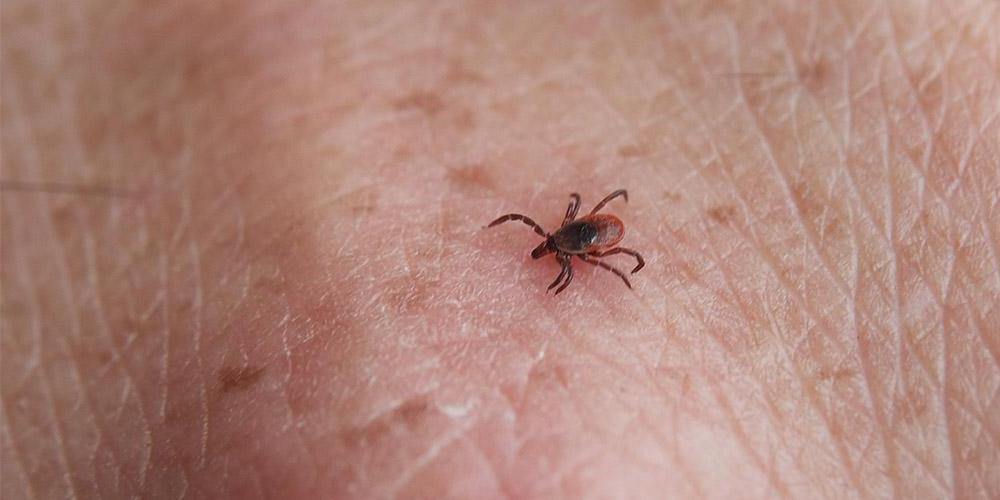As tick-borne disease rates rise, Upstate gathers experts for Lyme Disease summit
The Upstate Medical University’s Institute for Global Health and Translational Sciences and CNY Lyme and Tick-Borne Disease Alliance will host the 2023 Lyme and Tick-Borne Disease Summit Sept. 28 and 29 at the CNY Biotech Accelerator at 841 E. Fayette St.
The summit is aimed at healthcare providers, researchers, students, patients and patient advocates with a goal of offering education on how to identify and treat Lyme and other tick-borne diseases.
“The hope is that we can bring more education to our local providers in a time where ticks and tick-borne diseases are being encountered more frequently,” said Upstate’s Kristopher Paolino, MD, assistant professor of microbiology and immunology, who specializes in Lyme disease care. “There are some differences in the clinical approach to recognizing, treating and preventing these diseases. We want to try to ensure that if preventive measures fail, our healthcare personnel can promptly recognize these infections.”
Tick-borne diseases are on an alarming rise in New York state. Data from 2008 to 2016 show a 439 percent increase of diseases in Central New York; 970 percent increase in the Finger Lakes; and an 817 percent increase in the Southern Tier.
Upstate’s Christina Lupone, MPH, director of the Center for Education and Training in the Institute for Global Health and Translational Science, said ticks can feed on a variety of hosts, including wildlife, and as humans expand into wild or rural areas, they may be exposed to ticks more frequently.
“Tick-borne diseases are increasing due to a variety of factors including climate and land-use changes, which have helped ticks to expand into new geographic areas,” said Lupone, one of the event organizers.
The summit includes discussions and panels with practitioners, scientists and patients. Upstate experts such as Saravanan Thangamani, PhD, will present about the Powassan Virus; Jennifer White, MPH, will give an update on the state of tick surveillance and outreach; and Paolino will give an update on the development of Lyme vaccines.
Upstate and the CNY Lyme and Tick-Borne Alliance, initially partnered with the Trudeau Institute in Saranac Lake for the inaugural summit last year in Saranac Lake. It was moved it to Syracuse in hopes of expanding its reach. Lupone said participation this year has doubled.
“It is important to create the space for physicians, researchers, and patients to come together and learn from experts in the field,” she said. “Each medical provider who leaves with increased knowledge on recognizing and treating Lyme and other tick-borne diseases will be an asset to our community as we continue to face the increasing prevalence of tick-borne diseases.”
Other topics include long COVID and long Lyme, Lyme disease and autoimmunity and a patient panel on living with Lyme. Lupone said some patients suffer from symptoms of Lyme disease, but do not present with the telltale bullseye rash which may delay their treatment and diagnosis. Like long COVID, she said, some Lyme disease patients suffer from long-term complications that are often poorly understood.
“Patients suffering from Lyme and other tick-borne diseases are often frustrated with the medical system,” Lupone said. “Many patients have unresolved symptoms, require multiple visits to a variety of specialists, and face a prolonged diagnosis process. It is important to provide continuing medical education to providers to limit the knowledge gaps in the community about these complex diseases.”
Adds Paolino: “The main thing is to ensure we can identify and correctly treat these infections as early as possible. This is important to avoid morbidity [essentially long-term problems] and mortality [some of the infections can be life-threatening]. A delay in the diagnosis of a Lyme infection can result in long-term complications. We are also seeing newer pathogens beyond Lyme disease that were not commonly encountered in clinical practice.”
Anne Messenger, board chair of the Central New York Lyme & Tick-Borne Disease Alliance, said that tick-borne disease is a complex, perplexing realm, with few silver bullet answers. She said the conference will dig into those complexities from two distinct viewpoints: the Infectious Diseases Society of America (IDSA) and the International Lyme and Associated Diseases Society (ILADS).
“In exploring several real-world case studies, attendees will have a rare opportunity to compare and contrast these distinct approaches,” she said. “We anticipate open dialogue and thought-provoking, lively discussions, and participants will walk away with a deeper understanding of nuances of the diseases and the evolving landscape of treatment options.”
Register here.

